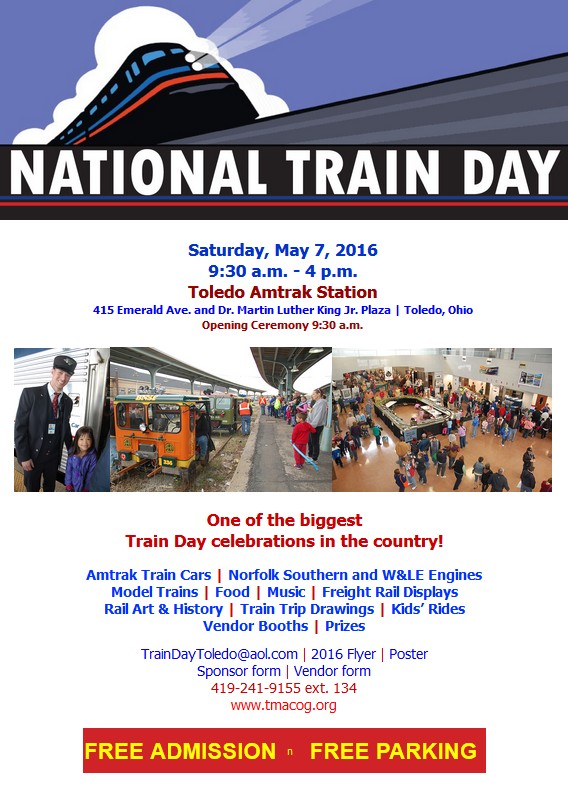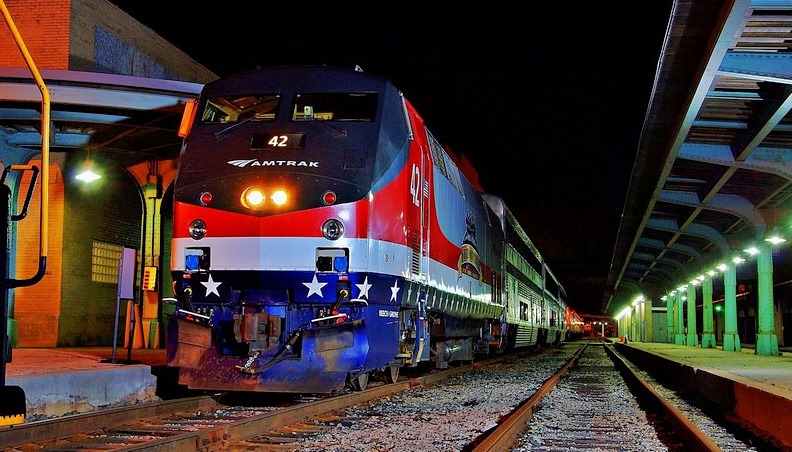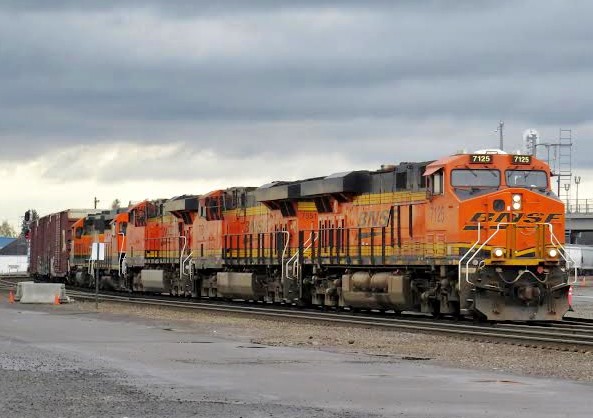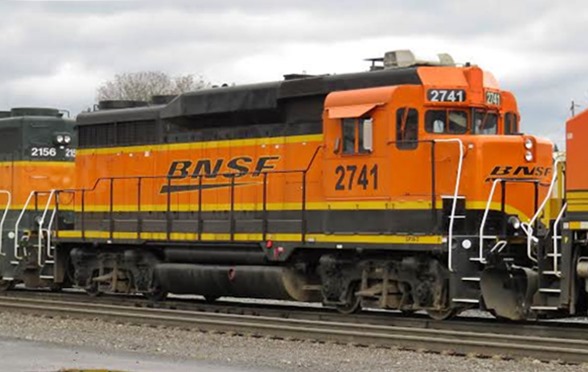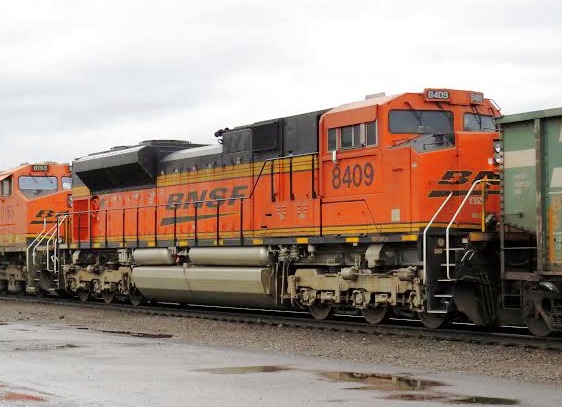
News And Photos From Our American CRO Contributors.
|
Several years ago, I was invited to be a
member of the Toledo National Train Day Committee. This group of volunteers
has diverse backgrounds, with many belonging to rail advocacy organizations.
While we might not always have a consensus on what should happen and when,
everyone does agree on making Toledo National Train Day one of the best in the
country.
|
||||||
The Rail Business Is An Industry Full of Tired, Stressed Workers.
Is It An Epidemic?
NOTE: The opinions and comments expressed in this article are those of the authors alone and do not reflect an Agency policy, endorsement, or action. NTSB does not verify the accuracy of the contents of the blog.
(By Georgetta Gregory) Posted in the NTSB SAFTETY COMPASS
I know this first-hand because, before coming to the NTSB several years ago, I spent more than 30 years working in the freight railroad industry. While freight railroad managers and crews count on reliable schedules to make their shipments and make their customers happy, there is no routine schedule for the hundreds of thousands of crewmembers employed in this business. As a result, many railroad workers are literally walking and working in their sleep.
I was one of them.
One of my last jobs before coming to the NTSB was as a trainmaster for a major freight railroad. My duties included safely seeing the arrival and departure of trains in and out of terminals in California. I spent a large majority of my time reviewing train schedules and communicating with train personnel of arriving and departing trains. I coordinated the efforts of nearly 300 crewmembers, including yardmasters, dispatchers and engineers, to execute the transportation plan on my territory. Additionally, I was responsible for making sure all the work was done safely and in accordance with rules and regulations.
The job was very stressful and required long hours. It wasn't unusual for me to work 80 hours a week. I often worked overnight, evenings, weekends and long hours.
Over time, I became chronically fatigued. I gained weight and began to lose my memory and other cognitive abilities. I had no routine schedule for sleep, because I worked irregular hours that were counter to my circadian rhythms. Eventually, I began to make mistakes at work and in my personal life - potentially dangerous ones.
Noting how my work and home life was suffering, I went to a sleep specialist. The doctor determined that I was fatigued at a dangerous level - to the point where the state of California took my driver's license. Ironically, while I could no longer drive a car, I was still expected to carry out the meticulous details associated with managing rail yards.
I warned my bosses, but there was little help or response. I made suggestions for improvements, including encouraging the railroad to provide better lineups and opportunities for rest, but I felt unsupported and became concerned for the safety of my crews. Eventually, I left the railroad and began a new career.
My story is not unusual. And when I came to the NTSB as Chief of the Railroad Division, I quickly learned that the NTSB also realized the dangers of fatigue in the railroad business. As a result of our investigations in recent years, we have issued more than 25 recommendations related to managing fatigue, all still open, needing to be addressed.
Wreckage of BNSF train, including lead locomotive of striking train, at Red Oak, Iowa.


One accident, in particular, involving a freight train perhaps best highlights the danger the NTSB is attempting to eradicate. In April 2011, an eastbound BNSF Railway (BNSF) coal train traveling about 23 mph, collided with the rear end of a standing BNSF maintenance-of-way equipment train near Red Oak, Iowa. The collision resulted in the derailment of 2 locomotives and 12 cars. The lead locomotive's modular crew cab was detached, partially crushed, and involved in a subsequent diesel fuel fire. Both crewmembers on the striking train were fatally injured.
We determined that the probable cause of the accident was the failure of the crew of the striking train to comply with the signal indication requiring them to operate in accordance with restricted speed requirements and stop short of the standing train becausethey had fallen asleep due to fatigue resulting from their irregular work schedules and their medical conditions.
As a result of that accident, we recommended that the railway require all employees and managers who perform or supervise safety-critical tasks to complete fatigue training on an annual basis and document when they have received this training, and that they medically screen employees in safety-sensitive positions for sleep apnea and other sleep disorders.
Both the conductor and the engineer had worked irregular schedules for several weeks leading up to the accident. During this time, work start times often varied significantly from day to day for both crewmembers. Changing work start and end times can make achieving adequate sleep more difficult, because irregular work schedules tend to disrupt a person's normal circadian rhythms and sleep patterns, which in turn can lead to chronic fatigue.
Scene of the derailment of Metro North Train 8808.
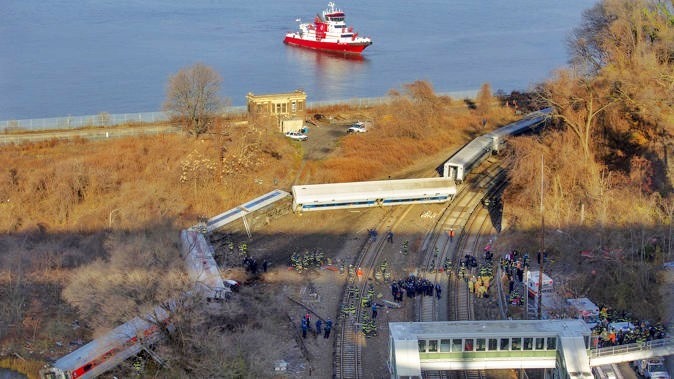
More recently, we investigated an accident in New York where a Metro North Railroad locomotive engineer was operating a train with undiagnosed severe obstructive sleep apnea (OSA). The train, on its way toward Grand Central Station in New York, New York, had 115 passengers on board. The engineer headed into a curve with a 30 mph speed limit traveling at 82 mph, resulting in a derailment. Sixty-one people were injured, and 4 passengers died.
The engineer experienced a dramatic work schedule change less than 2 weeks before the accident, with his wake/sleep cycle shifting about 12 hours. Previously, he had complained of fatigue but had not been tested or treated for sleep apnea. After the accident he had a sleep evaluation that identified excessive daytime sleepiness and underwent a sleep study resulting in a diagnosis of severe OSA. Following the study, he was treated successfully for OSA within 30 days of the diagnosis.
The NTSB issued safety recommendation to the Metro-North Railroad to revise its medical protocols for employees in safety-sensitive positions to include specific protocols on sleep disorders, including OSA.
We have issued numerous recommendations to the Federal Railroad Administration, as well, requiring it to develop medical certification regulations for employees in safety-sensitive positions that include, at a minimum, a complete medical history that includes specific screening for sleep apnea and other sleep disorders, a review of current medications, and a thorough physical exam. If such a recommendation had been implemented at the railroad for which I worked, my fatigue most likely would have been caught earlier and mistakes avoided.
(Note: As I was writing this blog, I was heartened to hear that, on March 8, the FRA announced it was seeking public input on the impacts of screening, evaluating and treating rail workers for obstructive sleep apnea.)
And while the railroads and the federal regulators are responsible for addressing this epidemic, so too must railroad workers recognize the dangers of working while fatigued. Yet many are compelled to make money and want to stay ready to react at any hour of the day to avoid missing the opportunity to get paid. To a certain extent, I understand this. And that's why we must also work with labor unions to address this issue and provide workers the opportunity for sleep, while still allowing them the opportunity to get a paycheck and progress in their careers.
Fatigue in transportation is such a significant concern for the NTSB that it has put "Reduce Fatigue-Related Accidents" on its Most Wanted List of transportation safety improvements. It is not just an issue in rail, but an issue in all modes of transportation that must be addressed.
As a former railroad worker and now as a supervisor of railroad accident investigators, I can tell you we still have a long way to go to address this issue. Doing so will require the joint efforts of the regulator, the operator, and the employee. These efforts must be undertaken, because we can't keep running down this dangerous track.
Georgetta Gregory is chief of NTSB's Railroad Division.
AMATRAK TRAIN #89 Collision NTSB report:
About 12 36 p m eastern standard time on January 29,
1988, northbound National Railroad Passenger Corporation (Amtrak) train 66,
The Night Owl, struck maintenance-of-way equipment on track 2 in Chester,
Pennsylvania. The engineer of train 66 received serious injuries, and 8
crewmembers and 15 passengers received minor injuries. The estimated damage as
a result of this accident was $3,397,215.
Probable Cause
The National Transportation Safety Board determines that the probable cause of
this accident was the failure of the third-shift tower operator at Hook tower,
because of impairment by drugs or distraction or both, to operate the 7 switch
to allow train 66 to crossover from track 2 to track 1 and the failure of
Amtrak to provide positive protection for on-track equipment and
out-of-service tracks. Contributing to the accident was Amtrak's failure to
adequately monitor the activities and job performance of the tower operator.
Full Report Here : http://tinyurl.com/gwuomr6
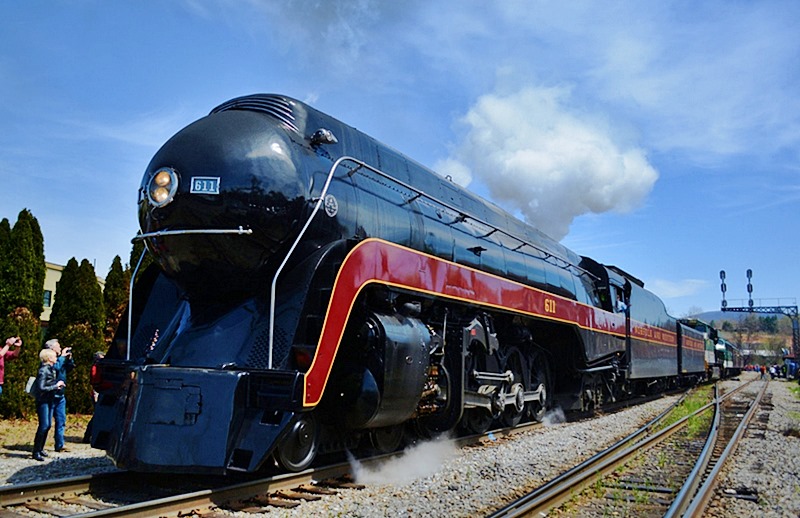
Check other great photos of NS 611 by John Simpson HERE
On April 10th, 2016, the Virginia Museum of
Transportation, NC Transportation Museum, and Norfolk Southern teamed up to
operate an excursion train from Spencer to Asheville and back. The star of the
show was N&W 611, which would lead NS 8099 and SOU 6133 on the trip.
Of course, the route would take the train through one of the most legendary
railroad engineering feats in the east: The Old Fort Loops. Built between 1875
and 1879 by a predecessor of the Southern Railway, the unique track structure
ascends the Blue Ridge Mountains at a steady 2.2% gradient. In a three mile
long stretch, the tracks loop back on themselves three times to maintain the
steady grade and fit in a compact area of less than 1 square mile.
611 performed beautifully on the ascent, and we were there to capture the
climb through the loops with our drone. In addition to our loops sequence,
you'll find clips from Asheville and Old Fort on the return trip east. Enjoy!
Video by Richard Marchi. https://youtu.be/hfBK301BVhA
CSX hot intermodal Q028 passes W876-26, with a loaded military train, at the north end of the siding at Slaughters, Ky on the Henderson Subdivision. April 29 2016.

A former CN SW1200RS working in the USA: On March 16th, 2016 Jordan Hood shot Tulsa-Sapulpa Union Railway SW1200RS No. 109 shoving a cut of cars past the Verallia North America glass plant, on a pleasant morning in Sapulpa, Oklahoma.
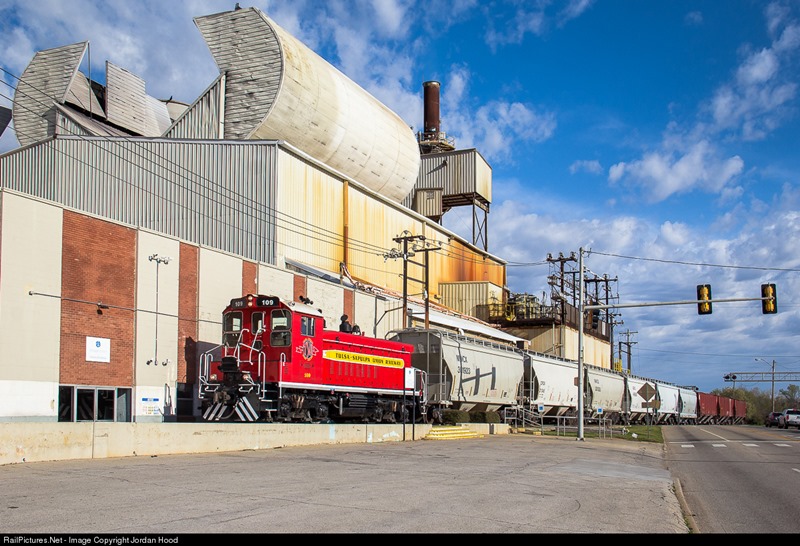
New locomotive (to Metra), Shane G. Deemer photographed this former GO F59PH working in Metra North Central Service (NCS) Train 115 on the CP Elgin Subdivision at River Grove, Illinois, on March 22nd, 2016. The train will continue to Junction B12, and run up the CN Waukesha Sub, to the final destination of Antioch, IL.
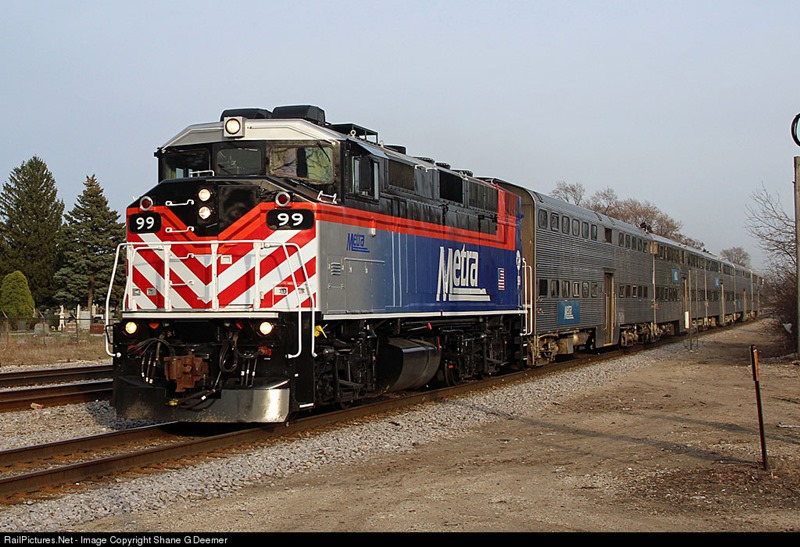
On April 4th, Jim Tiroch shot this brand new paint scheme on former (San Luis & Rio Grande) SLRG B39-8E 8537 now painted and lettered TBRX 8537 at the TRRA Yard, Madison, IL. The Taconic and Berkshire Railroad is a new shortline in Connecticut.
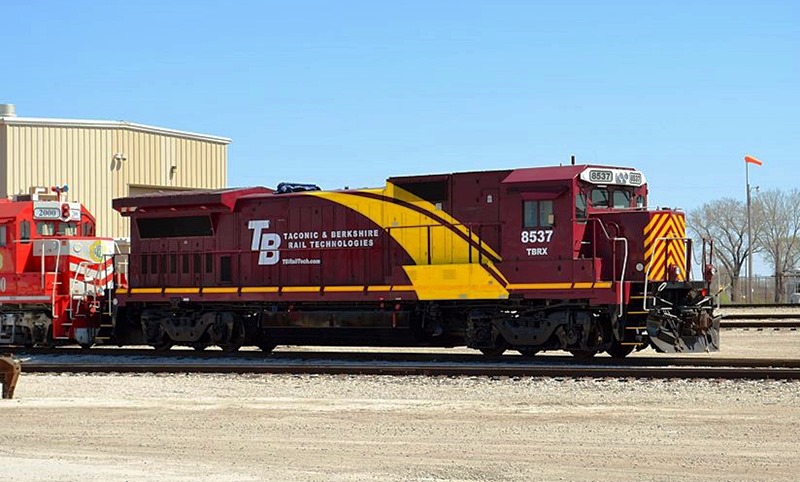
At Mosier, Oregon on April 3rd, 2016 Kevin Dunk clicked GE-built ET44AH UP 2665 leading a freight.
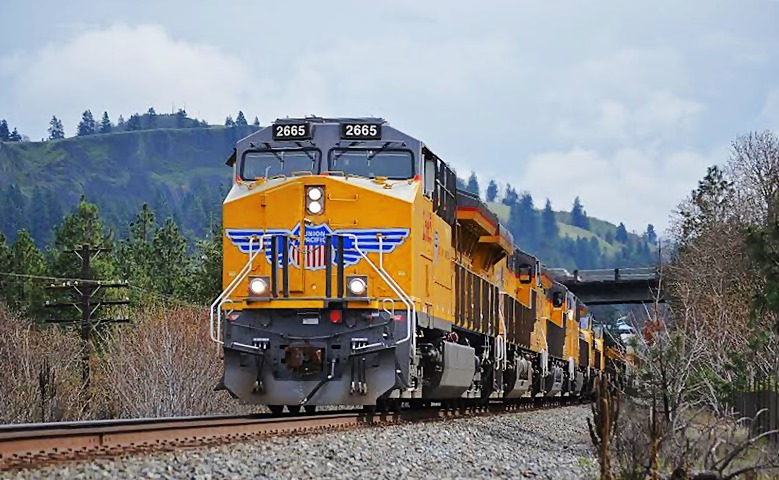
Kevin also photographed BNSF SD70ACe 8390 on March 31st, 2016 at West Diamond, Idaho.

|
In Vancouver, Washington, Shawn Heller photographed BNSF H-VAWBAR is passing by the yard office on its way east. The 7125, 7351, 7641, 2741, 2156 are on the head end, with the BNSF 4888 and 7849 for DPU's on March 20th. |
|
|
A roster shot by Shawn showing rebuilt BNSF GP30R 2741. |
|
|
Shawn also caught this BNSF Roberts Bank coal train easing up to 11th Street in Vancouver, for a crew change. The lash up was almost entirely made up of EMD SD70ACE's with the BNSF 9251, 6135, 8409 up front, and BNSF 8488 as the tail end DPU. |
|
|
|
|
Port Harbor Rail Corp. (a subsidiary of Respondek), has repainted a former SOO (Milwaukee bandit) GP40 into Illini Terminal 2064. This shot was taken by Jim Tiroch at Granite City, IL, on April 3rd. The owner Terry Respondek is also a rail fan, and likes the Illinois Terminal 1960's green, silver and yellow paint scheme.

One year ago, Mark Mautner shot former SOO GP40 2064 in 2015 at her new home before she entered service and got repainted into Illini Terminal livery.
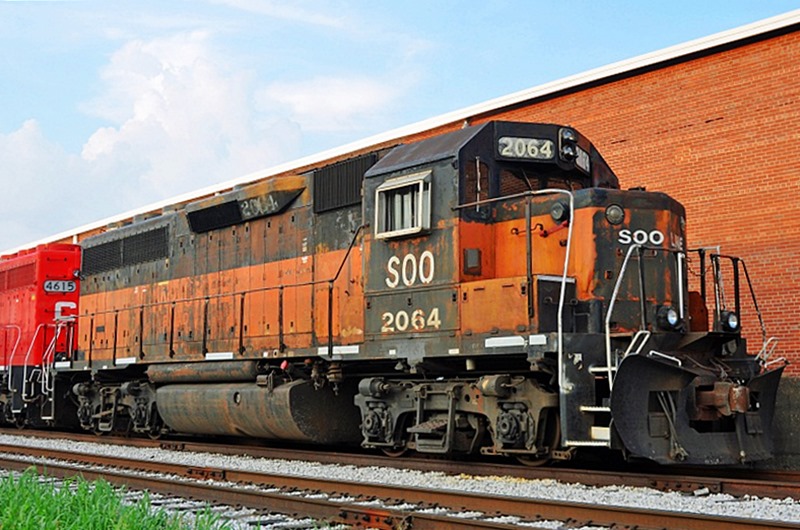
Sam Sponsellor snapped a pair of tunnel motors back to back Wheeling Lake Erie W&LE 8795 and W&LE 5413 Willard, Ohio on April 4th, 2016. The former Rio Grande SD45T-2 really looks terrific on the W&LE!


Here is how W&LE 8795 looked on the Respondek-owned Squaw Creek and Northern RR, just before it started work on the W&LE. (Jim Tiroch photo).

Former CN GP40-2LW 9654, has a whole new life in the USA as Huron and Eastern (HESR) 9712, shot at Saginaw, MI working hard with former BN B30-7 5482 (nee-Frisco SLSF 870).
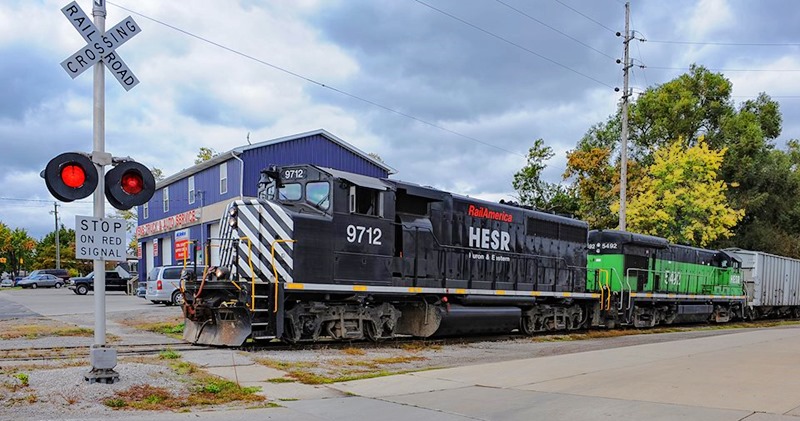
Dennis Weber photographed UP LTA-41 with UP 2233-2208-1990-6689-7855 shaking the ground and looking lovely in Armor Yellow, as they round the curve in Dakota, MN on March 21st.

Shawn Heller shot BNSF 2754, 1746, and 1512 sitting on the tail track in Vancouver, WA on February 27th, as Amtrak Cascades train 513 arrives at the station with AMTK 90340 up front and AMTK 470 shoving on the rear of the Talgo passenger cars.

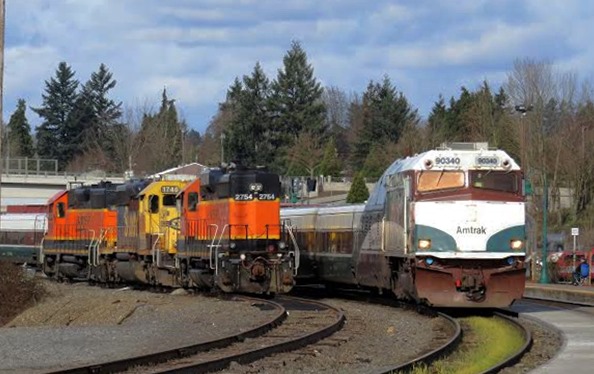
BNSF train M-PTLPAS is off the bridge, and heading east round the curve at the Vancouver Amtrak Station in Washington, with BNSF 5481, 5104, 5101, 8349, and 7513.

Mike Garza shot another completed geep of regional Dakota and Iowa Railroad (DAIR 2513), completed in February 27th, 2016 at National Railway Equipment in Dixmoor IL.
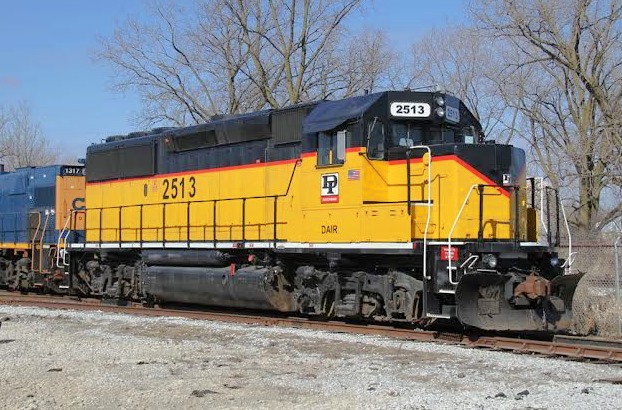
As we reported last month, SWP SD40-2 1304 was completed at NRE, and here on March 4th we see her on CSX Q368 departing Riverdale, IL with the SWP 3504 in tow, taking it to home rails. She was built at EMD LaGrange as L&N SD40 1240, became CSX 8316 and later FURX 3016, before sold to NRE for rebuild.

On March 4th, CSX U 368 with the CREX 1420 is at Blue Island heading to the BNSF on March 6th. (Mike Garza).
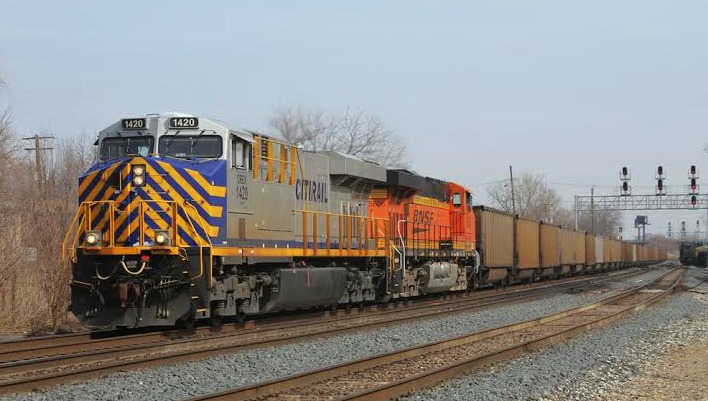
At Relco in Albia Iowa on March 9th, Justin Spencer clicked rebuilt BNSF GP39-3's 1582, 2589, 2590,2591, 2592,2593 and 2594 sit on the wye track in front of the Relco facility. Some finishing touches are still being added to 2589 in the form of numberboards. It is interesting to note some of the ex-GP30s had their whole cab replaced but still retain the flared out section just before the dynamic brake bulge.

George Manley snapped UPEB with heritage WP 1983 on the point of 4583-5269 lead a 129 platform stacker with DPU's 5310-6641 cut in 33 platforms from the rear at Rodeo, California.

Amtrak 200 again Train # 6 with nine cars at Rodeo, CA. Amtrak 200 was the regular unit on #5/6 for a full week in March 2016.

Also in mid-March, UP 5308-7770 on the point of an ethanol train that will terminate in east Oakland and then be backhauled to Selby for unloading. DPU UP 6555 brings up the rear of the WB 5308, with the standard buffer car placed on the lead, and on the rear of the Ethanol train.


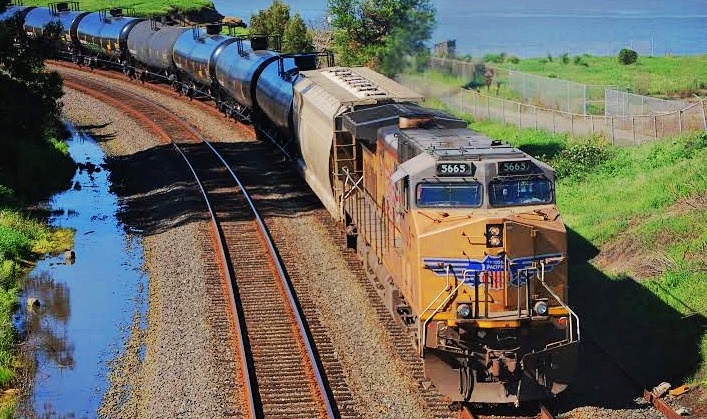
On March 6th, these were the storage lines on the Norfolk Southern at Roanoke, VA shot in both directions by Joe Ferguson.
NS Roanoke storage lines looking west March 6 2016 Joe Ferguson

NS Roanoke storage lines looking east March 6 2016

As part of its network-wide capital spending
program, BNSF Railway says it will invest about $180 million in California
infrastructure in 2016. The railroad says it will re-surface 1,100 miles of
track, replace 35 miles of rail and more than 70,000 crossties. The railroad
says it will be adding capacity at the San Bernardino automotive and
intermodal facilities and will also begin a new project at the Stockton
Intermodal facility that aims to expand capacity for loading and unloading
containers and creating more parking.
"California plays an important part in the success of our overall network and
the broader economy," says Mark Kirschinger, BNSF general manager of
operations, California Division. The railroad says it will spend $4.3
billion on capital projects throughout its system in 2016.

Built by GMDD London, ON back in 1966 Mark Mautner caught former as CP Rail SD40 5511 in new dress on November 19th, 2011. Last operating as CITX SD40-2 3086, it was rebuilt by Metro East Industries in East St Louis IL into a SD38-2 to operate as Prairie State Generating Company #0957. The unit is seen after her release from MEI in November 2011, in transit on CN at Coulterville, IL, to the Prairie State Generating Company where she was to assigned at the generating station in Marissa,IL.
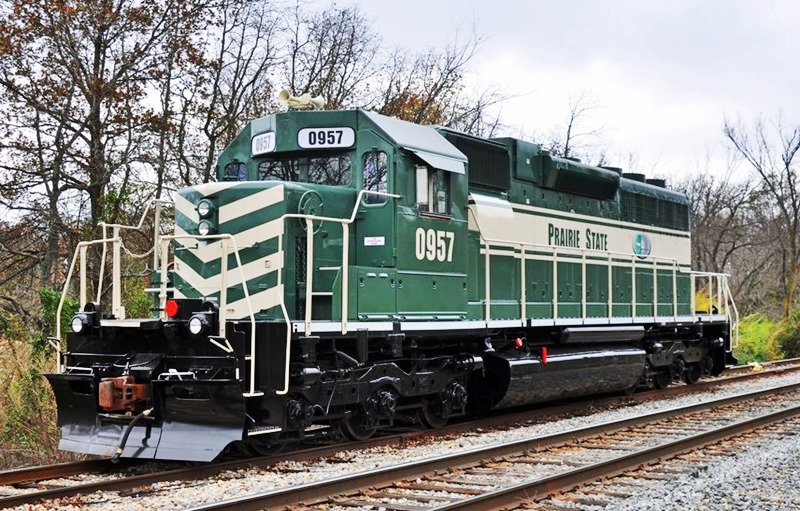
Mike Ray of nslocos.com submitted his great night shot taken at the Tennessee Valley Railroad (TVRM) Soule Diesel Shop in East Chattanooga, TN on April 28th. The locomotive is TVRM`s newly repainted Tennessee Alabama & Georgia Railway GP38 (TA&G 80).
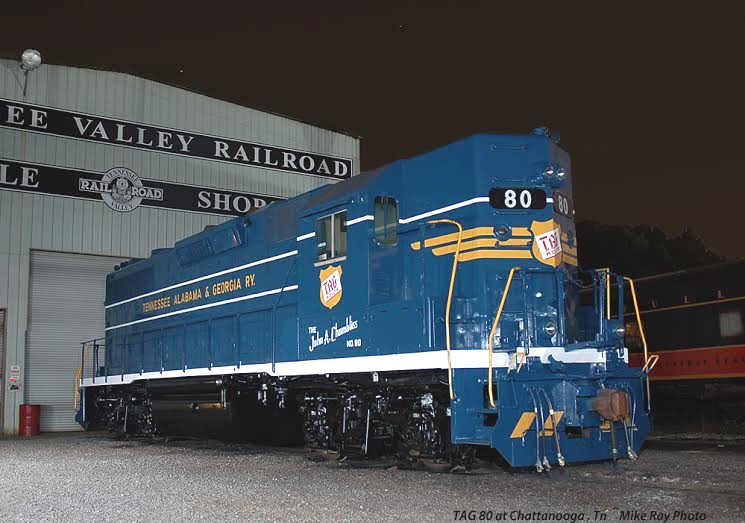
Mike Garza clicked CITX SD38-2 6059 fresh from release at NRE at Dixmoor, IL on March 25th.

CN 343 on March 22nd had great looking GE-built ES44AC CN 2874 departing Markham Yard.

At Homewood, IL Mike caught rebuilt GMTX GP15-2 413 on March 25th.

On April 3rd, a southbound UP coal train had GE-built ES44AC UP 8223 looking good at South Holland, Illinois.
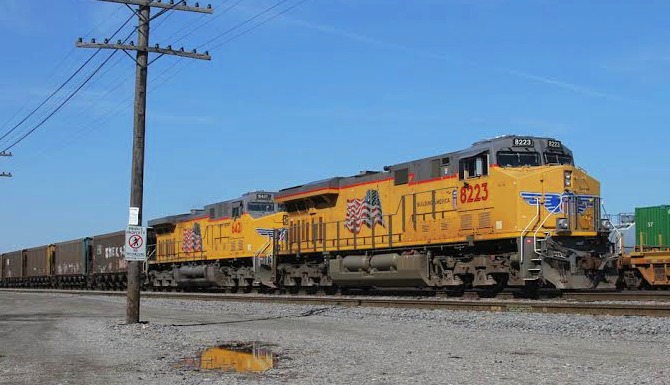
At Blue Island IL, CSX train 091 had UP SD70AH 8911, and the Southern Pacific Heritage SD70Ace unit (UP 1996).


An Amtrak Ballast Train (running as train 855, with a GE-built B32-8WH Amtrak locomotive at each end, and made for an unusual sighting in Whiting, Indiana during March.
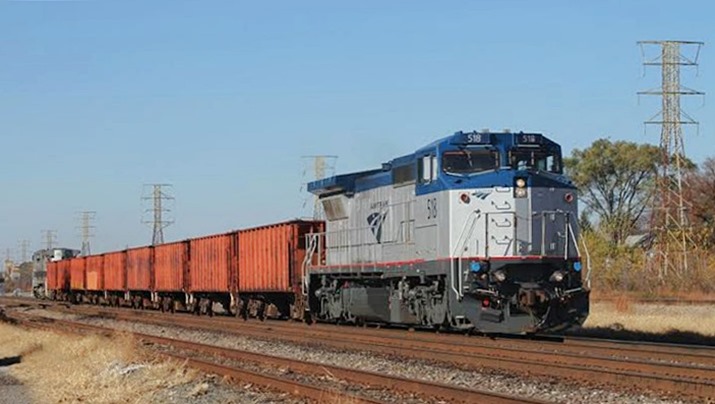
|
A very unique consist rolled by Mike Garza in late March. An Indiana Harbor Belt crew delivered a pair of brand new METRA electric cars They are seen being slowly shoved into the Metra yard in Blue Island IL, with borrowed UP SD70M 4492 pushing on the tail end. |
|
|
|
|
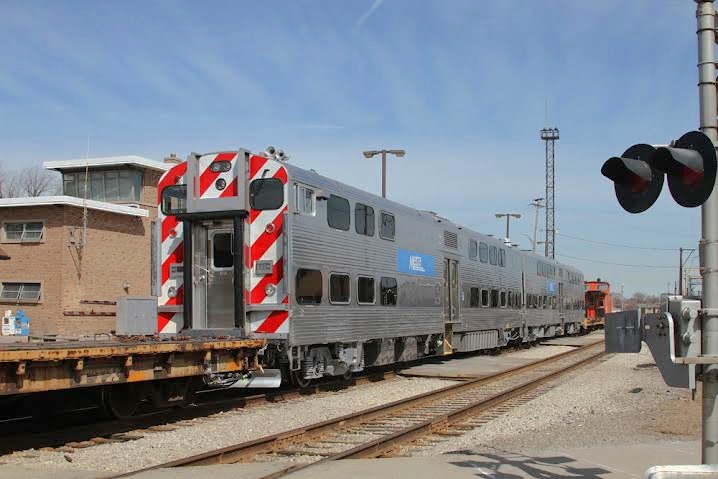 |
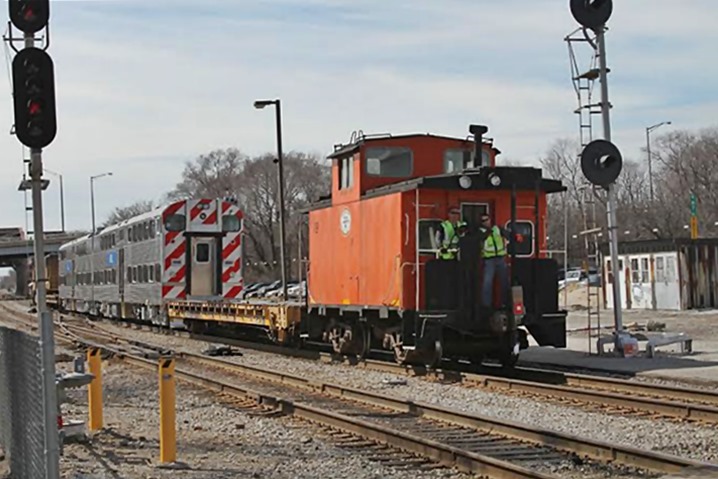 |
CSX Q368 is at Riverdale, IL with the SD70MAC "Sprit of Nashville" (CSXT 4589) last month.

CSX K 221 is east bound on the former GTW with UP SD70-M 3854 leading last month.
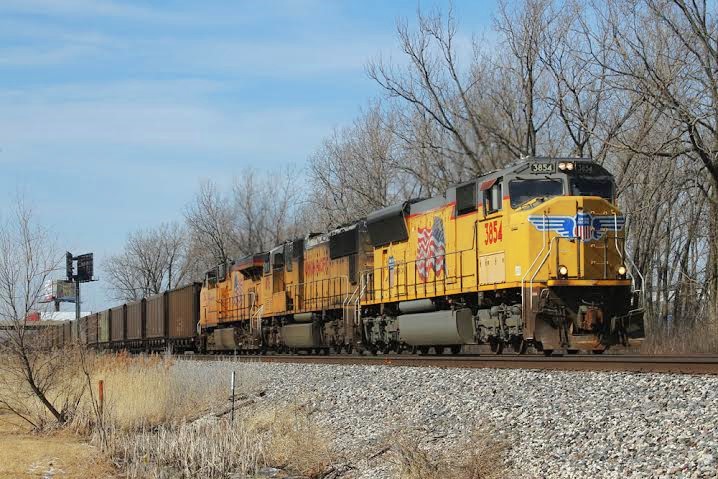
Would you like to see your photos here?
Send us your USA Vignette photos.
On August 10th 1948, New York, Ontario and Western (NYO&W) EMD-built FTA 808, leads a freight through Parkdale, NY.
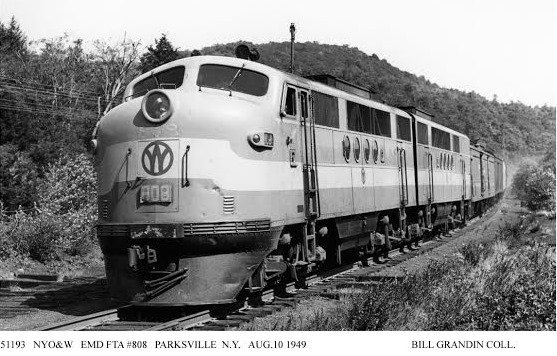
Built by GMD in March 1951, Wabash F7A 671 at Canfield Jct. Ontario back in May 1966. (Peter Cox photo)
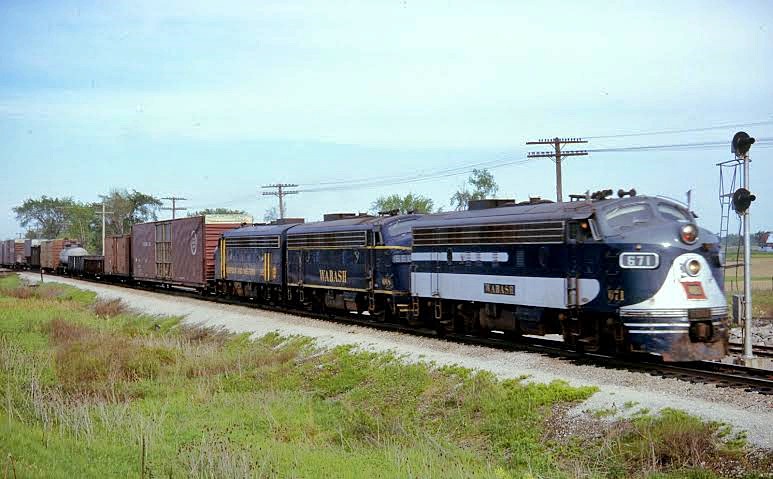
In June 1969 at Joliette, IL, NYC GP7 5805 pulls a short reefer block.


|
In May 1965, trailing unit NYC GP7 5625 with subsidiary "Peoria and Eastern" lettering ad lighting stripe at Chicago, IL. The geep had no steam generator. |
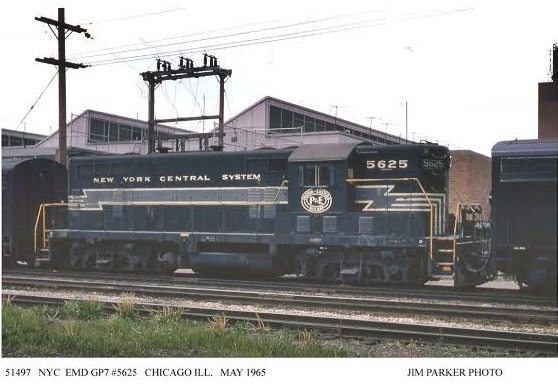 |
|
Another shot taken in Chicago of the same train with NYC F7A 1784 |
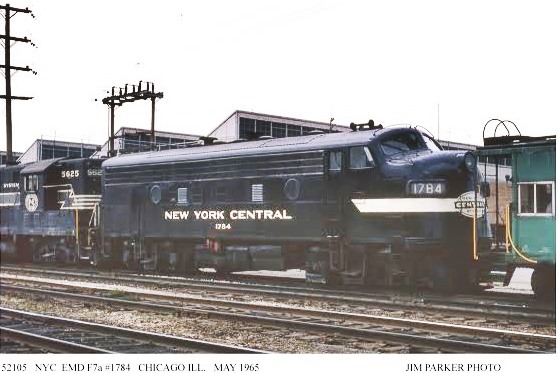 |
|
Even a little blurred ... this is a nice shot! NYC F7A 1759 (and a PRR GP9B), expediting a freight at Weedsport, NY back in October 1968! (Photo by my Dad's friend Jim Parker). |
 |
|
NYC F7A 1840 in lightning stripe paint at Niagara Falls, NY in October 1964. |
 |
A few months before CONRAIL-Day April 1st, 1976, Roger Durfee photographed this beautiful set of Erie Lackawanna E8's enjoying the afternoon sun outside the shop in Marion, Ohio. While the E-L gave these EMD's enough TLC to keep them running, sadly their future wasn't going to be very secure under the new Conrail Management.

Fairly clean for an Alco, Lehigh and Hudson River C-420 #23 sits on a former L&NE spur in Bethlehem, PA over Thanksgiving weekend 1976.
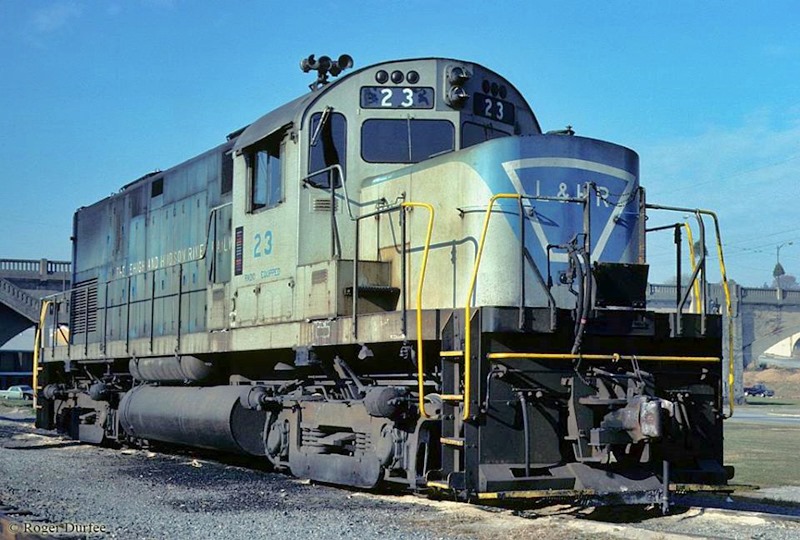
|
A B&O round roof bay window caboose in Chessie System yellow and blue was shot on July 8th 1983 in Bison Yard in Buffalo, NY. |
 |
|
AT&SF FP-45 on
display at EMD's LaGrange, IL plant back in 1989. |
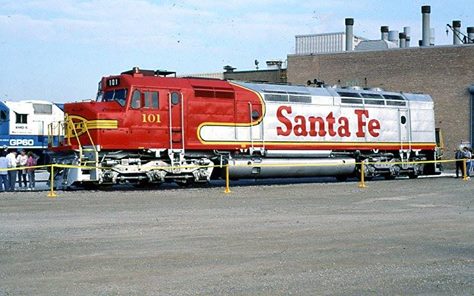 |
ALCO T6 101 of the Michigan Southern RR.(Pioneer Group) at White Pigeon, MI. October 6th, 2006.
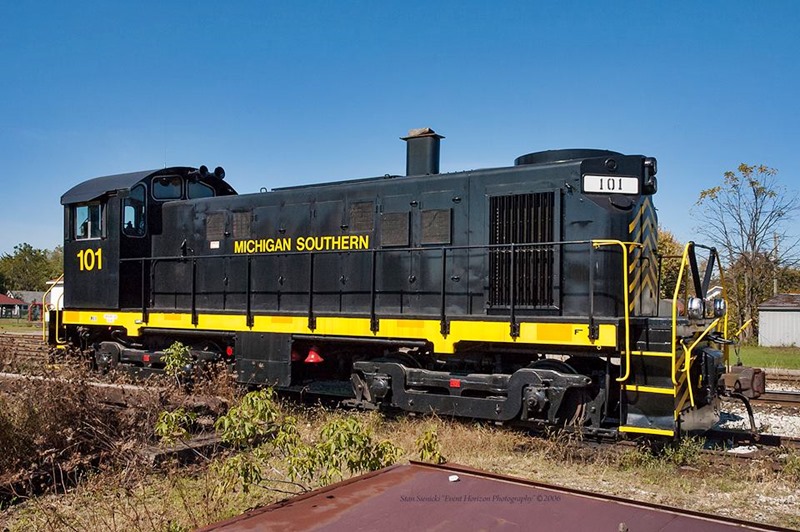
Click HERE to Submit Photos to South of the Border
Copyright CRO May 2016






